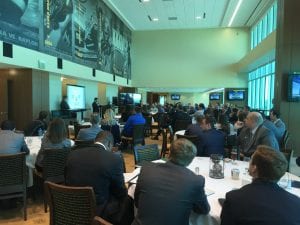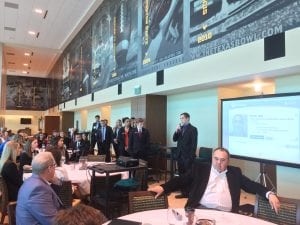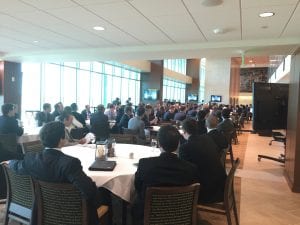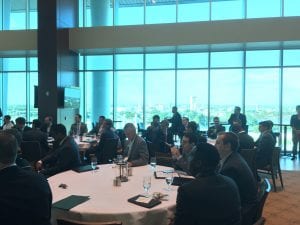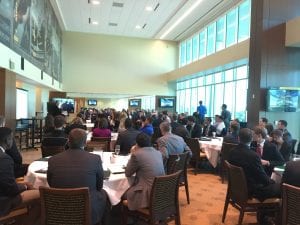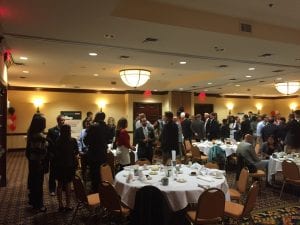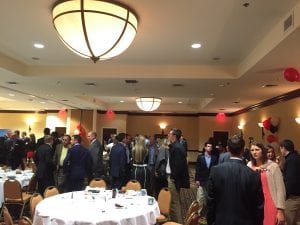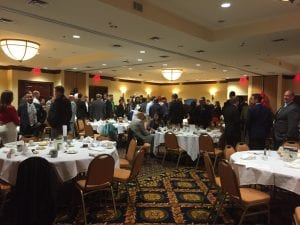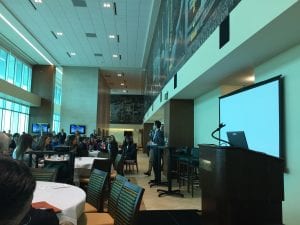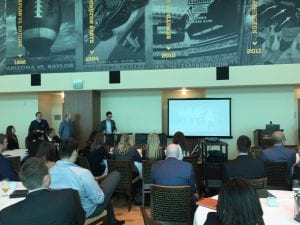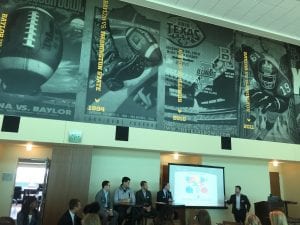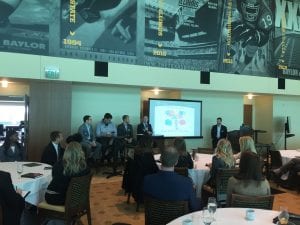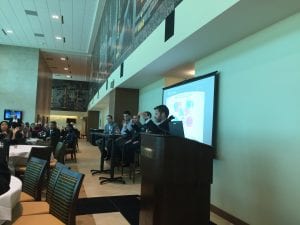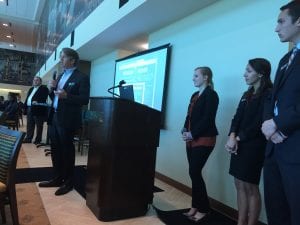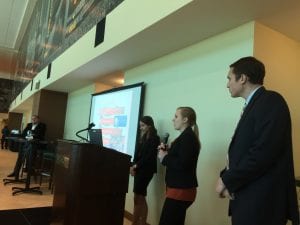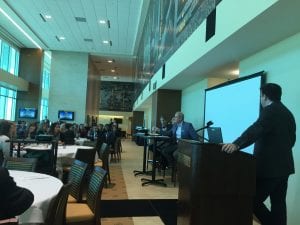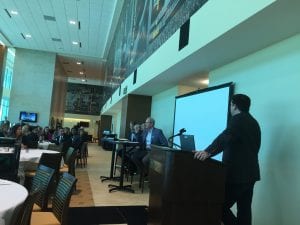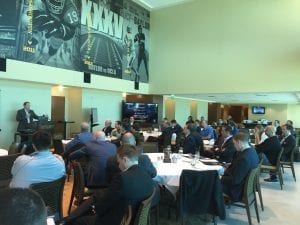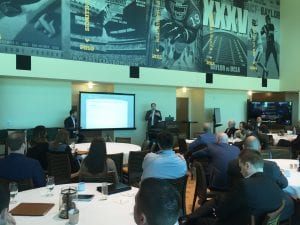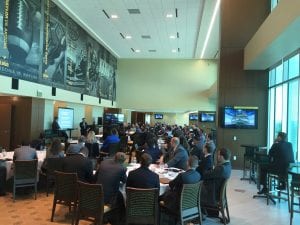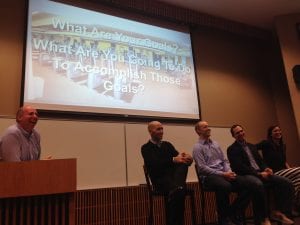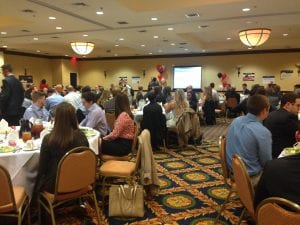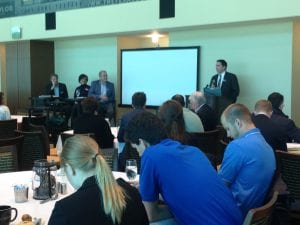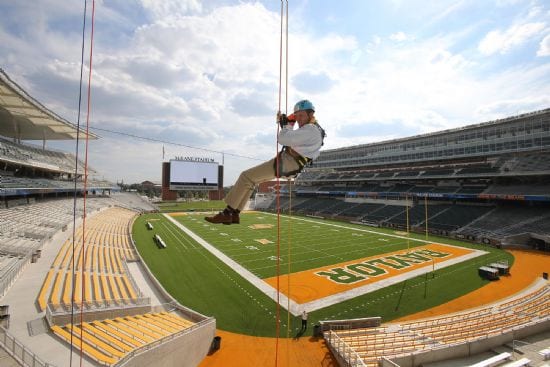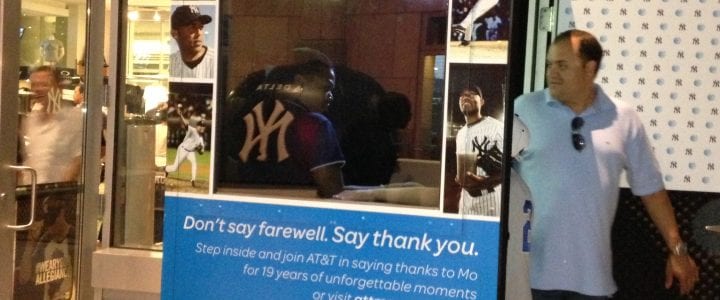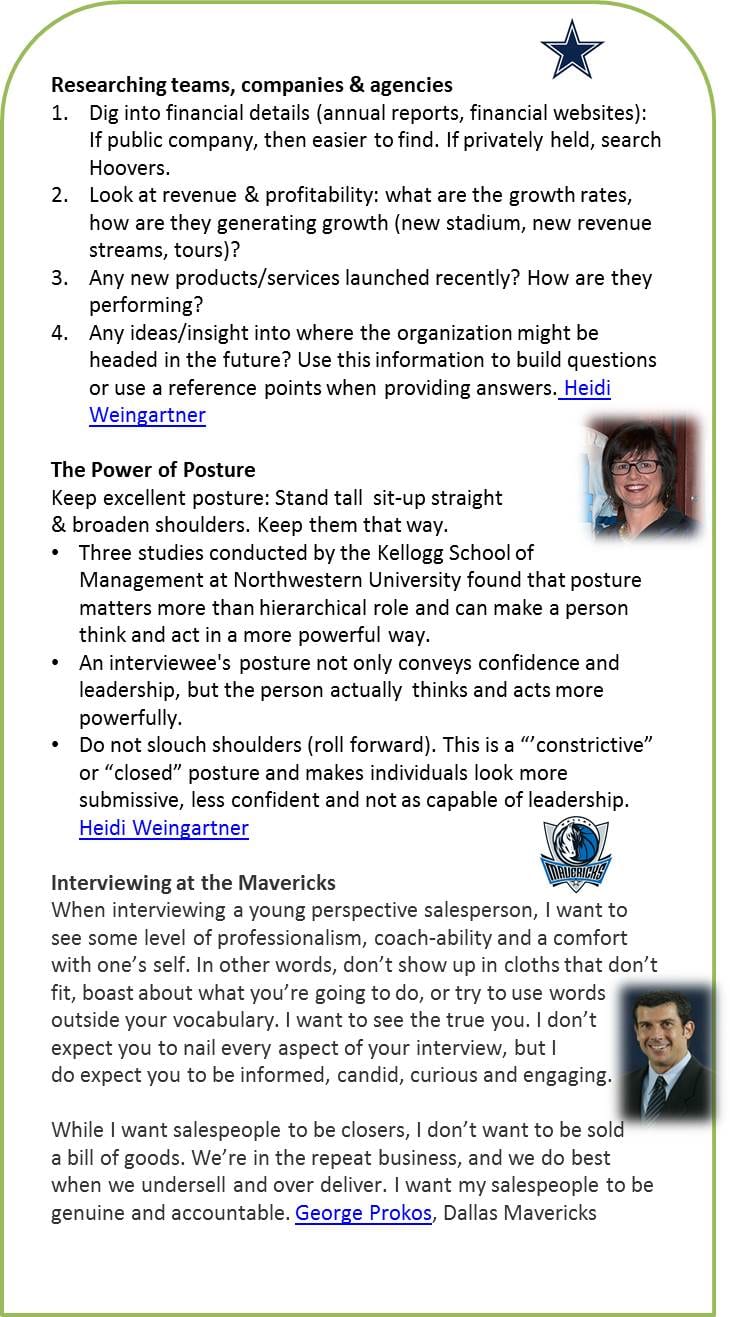by Kirk Wakefield – December 2014
The meeting for the Sports Sponsorship & Sales (S3) Board was held November 11th & 12th in Waco at the new McLane Stadium on the campus of Baylor University.
The only of its kind focused on selling sports, the S3 major is a selective program in the Hankamer School of Business at Baylor University, a highly ranked Christian university. The S3 program continues to grow from its original admissions of 19 highly qualified students in 2004 to soon selecting up to 38 in each year’s incoming class. Students in the major are prepared for careers in (1) professional selling for sports (tickets, corporate partnerships & service) and (2) customer relationship management (CRM) & analytics. Read more here on the Baylor website.
Phillips 66 S3 Banquet
Dr. Darryl Lehnus, Director of the S3 program, hosted the Phillips 66 S3 Banquet attended by over 140 executives, managers, S3 alumni and current S3 students.
Dinn Mann (BU ’87), Executive Vice President and a founder of Major League Baseball Advanced Media (MLBAM), provided the keynote speech, “The Changing Landscape of Digital Media & Ticket Sales.” Mr. Mann serves on the S3 Executive Council, along with other S3 Executive Council members recognized at the banquet, including:
- Eric Fernandez (BU ’94), Co-founder & Managing Partner, Sports Desk Media, S3 Executive Council Chair
- Greg Grissom (BU ’95), Vice President of Corporate Development, Houston Texans, S3 Executive Council Vice-Chair
- Tami T. Walker (BU ’86), US Brand Management, Phillips 66
- Jose Lozano (BU ’93), Chief Executive Officer, The Company
- Derek Blake (BU ’86 )Vice President, Partnership Marketing & Military Programs, LaQuinta Inns & Suites
- Drew Mitchell (BU S3 ’06), Chief Revenue Officer, Texas Legends
- Chase Jolesch (BU S3 ’10), Manager of Ticket Sales Center, Baylor University
- Heidi Weingartner, Chief Human Resources Officer, Dallas Cowboys
Chevrolet Outstanding Board Members
Over 60 executives and managers from over 25 teams, companies, and the NBA and MLBAM offices attended the 2014 board meeting, which included an afternoon of interviews for S3 juniors for summer internships and S3 seniors for career positions.
Special thanks to Murray Cohn, Vice President of Ticket Sales (NBA), for leading a panel of Sales All-Stars including Jake Reynolds and Brian Norman, Philadelphia 76ers, Kris Katseanes, FC Dallas, Joe Schiavi, Detroit Pistons, and Lacey Congdon (BU S3 ’14), Texas Rangers. As always, we are grateful to Bill Guertin for mentoring S3 students and kicking of the week along with Jason Howard (Houston Astros) and Tom Parsons (Time Warner Cable Media) as part of the “Faith in the Workplace” panel discussion.
The meetings concluded with the Chevrolet Outstanding S3 Awards given this year to:
- Outstanding Team Board Member: Greg Grissom, Vice President of Corporate Development, Houston Texans
- Outstanding Corporate Board Member: Lynda Carrier Metz, Chief Marketing Officer, Restaurant Management Company (Pizza Hut)
- Outstanding S3 Alum: Bryan Apgar (BU S3 ’07) Vice President of Sales & Business Development, Website Alive
- Outstanding S3 Report Writer: Anne Rivers, Senior Vice President, Global Director of Brand Strategy at BAV Consulting


